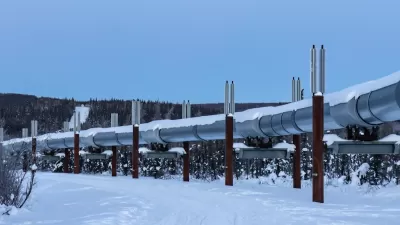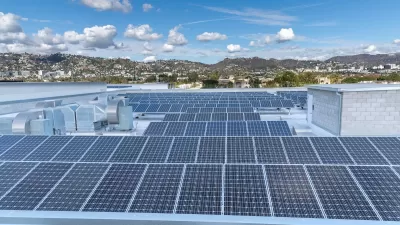This project could "save California," according to the Los Angeles Times. But it won't be easy.
The Los Angeles Times recently published a big, interactive feature about plans to build the largest wind farm in the United States—and ship the electricity to California via a 732-mile power line.
Sammy Roth reports on location for story to detail the tensions between the press need for renewable energy sources and the resistance of locals. “Solar and wind farms can create jobs and tax revenues, reduce deadly air pollution and slow rising temperatures. But they can also disrupt wildlife habitat and destroy sacred Indigenous sites. Some small-town residents consider them industrial eyesores,” writes Roth.
The project is backed by Phil Anschutz, owner of the Coachella music festival, the Los Angeles Kings hockey team. and L.A.'s Crypto.com Arena. Work is already underway: crews are constructing gravel roads and pads for some 600 turbines.
The bulk of the article is devoted to speaking directly with people living and working in the area around the planned wind farm. The article suggests that developing clean energy solutions will require California and other highly populated areas to find common ground with the locals affected by these projects.
FULL STORY: This power line could save California — and forever change the American West

Study: Maui’s Plan to Convert Vacation Rentals to Long-Term Housing Could Cause Nearly $1 Billion Economic Loss
The plan would reduce visitor accommodation by 25,% resulting in 1,900 jobs lost.

North Texas Transit Leaders Tout Benefits of TOD for Growing Region
At a summit focused on transit-oriented development, policymakers discussed how North Texas’ expanded light rail system can serve as a tool for economic growth.

Using Old Oil and Gas Wells for Green Energy Storage
Penn State researchers have found that repurposing abandoned oil and gas wells for geothermal-assisted compressed-air energy storage can boost efficiency, reduce environmental risks, and support clean energy and job transitions.

Private Donations Propel Early Restoration of Palisades Playground
Los Angeles has secured over $1.3 million in private funding to restore the Pacific Palisades playground months ahead of schedule, creating a modern, accessible space that supports community healing after recent wildfires.

From Blight to Benefit: Early Results From California’s Equitable Cleanup Program
The Equitable Community Revitalization Grant (ECRG) program is reshaping brownfield redevelopment by prioritizing projects in low-income and environmental justice communities, emphasizing equity, transparency, and community benefits.

Planting Relief: Tackling Las Vegas Heat One Tree at a Time
Nevada Plants, a Las Vegas-based nonprofit, is combating the city’s extreme urban heat by giving away trees to residents in underserved neighborhoods, promoting shade, sustainability, and community health.
Urban Design for Planners 1: Software Tools
This six-course series explores essential urban design concepts using open source software and equips planners with the tools they need to participate fully in the urban design process.
Planning for Universal Design
Learn the tools for implementing Universal Design in planning regulations.
Ascent Environmental
Borough of Carlisle
Institute for Housing and Urban Development Studies (IHS)
City of Grandview
Harvard GSD Executive Education
Toledo-Lucas County Plan Commissions
Salt Lake City
NYU Wagner Graduate School of Public Service





























